[ad#superworm]
Why did you choose to breed geckos to sell in addition to your python breeding?

I didn’t! When I got my first crested geckos, I worked for Gateway (computers) and never intended on selling them or even going into the reptile business full-time. In fact, it’s actually the crested geckos (and how popular they are) that made me decide to start breeding reptiles for a living. Crested geckos really didn’t show up on my “radar” until I read Allen Repashy’s 2002 Reptiles USA article. I read it about ten times over the course of about a year…just couldn’t get over the fact that you could keep them without crickets and that they thrive at room temperature. The way I saw it, the less I have to spend on food and caging, the more of them I could have. I still wasn’t convinced I needed geckos, but that’s when the idea entered my head. 🙂 In January of 2003, my friend Gary Quirk (now business partner) showed me some crested geckos at his house, which was when I went over to take pictures. They felt soft like suede and they let you hold them…now I was convinced I needed them! 🙂 So I came home with two babies. Ironically, I wasn’t all that impressed with them at first…they were brown with little black Dalmatian spots. After a while, though, the spots got bigger and the geckos started changing color. One turned orange and the other red. These geckos were both females. Coupled with another one of Gary’s holdback male Dalmatians, that became the start of our Chips bloodline. That said, before I even had a chance to actually breed those first geckos, I was hooked. When I say hooked, I mean I bought a good 200 geckos over the next two years. Looking back, it’s no wonder my whole family (and almost all of my snake buddies) thought I had gone off the deep end…what are the chances I’d end up being able to breed them for a living?
[ad#sponsor]
Which gecko species do you work with and which are most interesting to you this season?
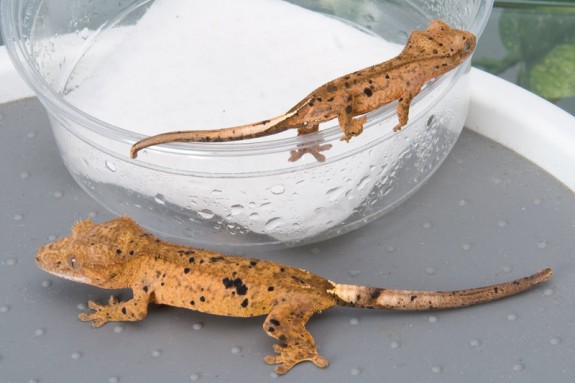
Crested geckos, Gargoyle geckos, can’t forget Chewie – he’s my pet Chahoua (high red mainland – great display), Leopard geckos, Mourning geckos and Tokay geckos. I’ve kept others, but that’s the list for now. We’re currently looking at adding a couple species of day geckos and some of the other Rhacodactylus species, like saras and chahoua. We’ve considered fat-tails too, but decided to wait and see how the market responds to the prices being asked for them. My gut instinct tells me they’re probably going to come down drastically in the next 12-18 months, so we’ve decided to wait it out. I do go through phases where certain species are more interesting to me than others, but we’ve been planning our 2010 pairings, so I’m really excited about everything right now. I could go on for an hour about our crested gecko projects and another hour on our leopard projects…and give me another couple hours to cover all the other stuff. 🙂 The cresteds and leopards are really shaping up nicely….the cresteds continue to wow me and we’re going into our seventh season now, so that’s gotta say something for them. I’ve gotten jaded over the years, but our numbers have grown so fast that the quality is starting to improve equally as fast…so even when I think I’ve seen it all, something ends up blowing my mind every time I go through babies. On the leopard front, we’re just now getting into the good stuff….probably where we were on crested geckos about three years ago.
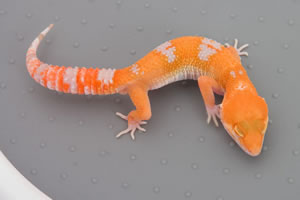 2010 will be the second year that we’ll be breeding leopard geckos that we actually produced ourselves. This means production should be much higher for the females we bred the first year and also that our quality will get even better through selective breeding. Like the crested geckos, we also have plenty of new/unique projects in the works. The one I’ve been excited about most lately is crossing our extreme tangerines in to the Mack snows and the Raptors. Like I said, I could spend a few hours going over all the new stuff coming up! 🙂
2010 will be the second year that we’ll be breeding leopard geckos that we actually produced ourselves. This means production should be much higher for the females we bred the first year and also that our quality will get even better through selective breeding. Like the crested geckos, we also have plenty of new/unique projects in the works. The one I’ve been excited about most lately is crossing our extreme tangerines in to the Mack snows and the Raptors. Like I said, I could spend a few hours going over all the new stuff coming up! 🙂
What can you tell us about your new crested gecko projects?
I really could go on for an hour about them all (probably longer), but here are some of the ones that really stand out to me at the moment. Harry Pinstripes– I’m breeding Harry himself to a bunch of girls that came from our black & cream pinstripe groups. The offspring are great…loads of cream, noticeably long crests as they mature. Have no idea why I didn’t think of this before.
Chocolate Pinstripes Doesn’t sound that cool, but just wait till you see them…some of the best looking pinstripes and the most attractive color you’ll ever see…and they’re brown! You know you’re onto something when you take a bunch of brown geckos to a show and people become irritated that I won’t sell them! On top of being total eye candy, these geckos have great structure and crests, but there’s something a little different that I guess you could call a structural trait. Their skin feels very smooth…almost like silk instead of the typical suede feeling.
Red Phantom Pinstripes– this is one of my favorites. They’re a red version of our “phantom” pinstripe and the color quality on them is just amazing. The first couple of red phantoms I produced were a bit mediocre in terms of color intensity (after all, the phantom gene comes from our black & cream pinstripes), so I took the first ones we produced and bred them with solid red geckos produced by my Alpha Red Harlequin group. That did the trick…the results were exactly what I was after and a lot better than I expected in one generation. They’re now about as red as a fire truck and built like one too.
Red Patterned Tigers– like a nice yellow/orange tiger, but with red markings instead of the normal black. This appearance cropped up in the Area 51 colony from breeding a wild caught male Tiger to a bunch of different females. Pretty cool project, but still very early….I think we may have five or so thus far, but I think this one will take off pretty fast when I get them bred into our other stuff. Tangerine Pinstripes…and Tangerine Phantom Pinstripes and Tangerine Phantom Dalmatians! I’m still calling this new because it started with a single unique female and has taken forever compared to projects where we started with a male. I’ve bred her to a half dozen different males over the years to produce a diverse line of her offspring, which we’ve selected for color like mom’s and are now breeding together. This year we finally produced a couple of smoking 3rd generation tangerine males, so this project should start moving along at a more normal pace from here on out. On top of that, the Phantom gene got worked into this line back when I bred Stripes to Pink (that’s the original female), so now we’re also starting to put together groups of Tangerine Phantoms…some of which are also Dalmatians and Super Dalmatians. And by the way, that’s not a typo…it really is spelled “Dalmatian” (not Dalmation). 🙂 And for those of you who haven’t seen our Tangerines in person and still think they’re just orange, you’re most likely looking at the first generation outcrosses that I put on my website, which we produced in 2006. Those aren’t nearly as intense as the 2nd and 3rd generation tangerines, which are actually closer to a coral-pink color than they are orange. Perhaps tangerine wasn’t the best name? Anyway, if you’re really into crested geckos, that project is one you really need to see in person at a show. In fact, if I had to pick one crested gecko project to work on for the rest of my life, this would be the one I’d take, even over our red harleys…that’s how different and attractive they are.
Tell us a little about your facility: how many geckos do you have and what kind of help do you have to care for them?
Our facility is 2,200 square feet of warehouse/office space. We have two larger grow-out rooms…one for geckos and one for snakes, the smaller incubator/growout room, and then there’s a large breeding room (the warehouse part) with a ground level loading dock (complete with garage door, etc). I don’t know how many geckos we have exactly, but it’s currently around 3,000 in total…most of which are non-breeding stock (babies, grow-outs, holdbacks, available, etc.)
We grow a lot of geckos out for our selective breeding projects and to see what they’re going to look like in a few months, so our numbers are always a bit higher than they probably need to be. With that many geckos to choose our future breeding stock from, quality is increasing dramatically from year to year, so from both a business AND hobbyist perspective, I think it’s worth the extra expense.
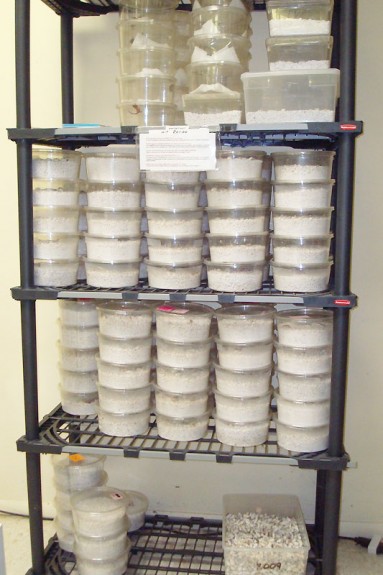 One figure I do know off the top of my head is the total number of tubs and cages, which is a little over 1,800 including snake cages and everything. To answer your question about help, there are three of us in total. Gary Quirk is my partner on the leopard geckos, boas and some other odds and ends. He spends most of his time managing the facility, which includes a million different things….making the feeding/cleaning/watering schedule, keeping track of inventory, shipping, bug orders, setting up babies, etc. Jason, Gary’s son, handles the bleaching, some feeding and cleaning, keeping our supply inventory well stocked, etc.
One figure I do know off the top of my head is the total number of tubs and cages, which is a little over 1,800 including snake cages and everything. To answer your question about help, there are three of us in total. Gary Quirk is my partner on the leopard geckos, boas and some other odds and ends. He spends most of his time managing the facility, which includes a million different things….making the feeding/cleaning/watering schedule, keeping track of inventory, shipping, bug orders, setting up babies, etc. Jason, Gary’s son, handles the bleaching, some feeding and cleaning, keeping our supply inventory well stocked, etc.
What advice do you have for people interested in breeding geckos on a large scale?
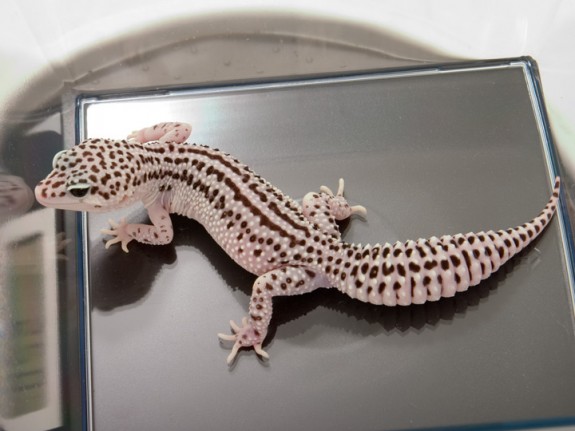
1. If you’re doing it out of your home, I say knock yourself out…the overhead is low and it’s not unheard of for a breeder to sell $50-100,000 worth of geckos a year from home. If you want to open a larger facility, just be careful not to grow too fast. It takes time to learn how to deal with large numbers efficiently…both in caring for them and in selling them. If you get too big too fast, you may end up making mistakes that cost you a lot of money or put you out of business.
2. Create something new instead of trying to produce the same morphs or combos as everyone else. Start with selectively bred lines that other people have developed and try to create something new either by selective breeding, or by crossing them into other morphs/projects. Selective breeding is something fairly new to herpetoculture and the possibilities are almost endless.
3. Don’t be afraid to spend a little more on your founding stock. Average quality geckos take just as much time and money to produce, and they usually take longer to sell since there’s so much more competition. At the end of the day, you probably won’t sell as many geckos either. Going into business can be risky as it is…why put yourself at a disadvantage with average quality animals? That little bit of money spent now will continue to pay for itself year after year. Yes, you can make your own nicer geckos by selective breeding, but you’ll always be two steps (or further) behind. Example…If you can buy geckos with the color you want for your new project, don’t spend all that time developing a project with lesser quality than you could have started with.
What aspect of gecko care and breeding takes up the majority of your time and why?
The majority of my time with the geckos is spent on logistics…going through stuff and deciding what to do with each gecko – or in many cases, deciding that it’s too early and that I need to decide later. 🙂 Selecting who’s going to be paired with who and selecting which ones I’m going to keep is a lot trickier than you might think. When you’re producing several thousand geckos a year, you literally can’t afford to raise them all long enough to see who all is going to be outstanding and who’s not….so it takes some planning to figure out what we can afford to keep and what has to go. Even with the older geckos that we do grow out, sometimes there are geckos that are so nice, you can’t afford to keep them. I guess that’s cool though because we’re still making huge strides and it gives a few other breeders the chance to access the absolute best stuff we’re producing. I say it’s tough, but only from a selective breeding standpoint. Sorting through a bunch of cool geckos for a living isn’t tough at all. 🙂 I can’t leave out Gary and Jason, though. Those two spend even more time with the geckos than I do (between feeding, doing inventory, cleaning and watering, etc.)
How has the economic climate affected your sales?
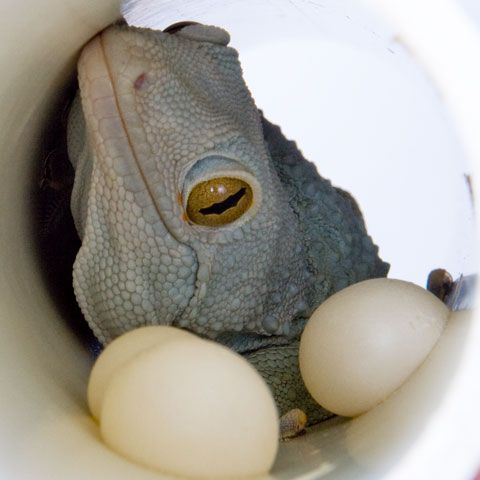
Honestly, I’m not really sure, but I know it has. I’ve been selling reptiles online (as a hobbyist) since 2001, but only full time since around mid-2005. That means we’re still growing our collection, so our sales have increased steadily every year…even this year is up from last year. That was to be expected, though…especially with the rate we’ve grown the collection. That said, I think we would be doing a lot better if more people were working right now. All in all, I guess I try not to think about it too much. We’ve already made it through the worst part (at least that’s what they’re saying) and if our business can grow through this economy, we’re bound to be successful if we keep growing and adapting like we have been doing.
What kind of gecko-related supplies do you offer on your website and how did you decide on them?

Currently, we really don’t focus too much on supplies. We do distribute the kritter keeper racks (very big seller for us), show displays and a couple of books that we recommend, but that’s it. That being said, things could change soon. Gary and I have been talking casually (thus far) about opening up a retail location of some sort. If that happens, we’ll most likely start selling the products on our website first, in order to build up an inventory and find out what’s popular, BEFORE we take on even more overhead. So if you see us start offering more products, you’ll have an idea of why.
Thanks so much for your time, Anthony!
[ad#250]


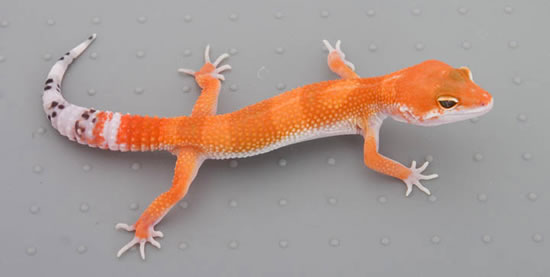
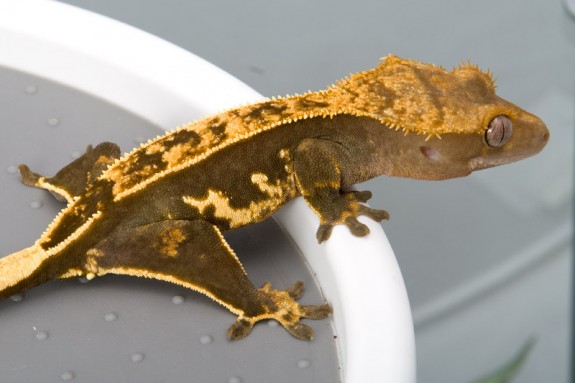
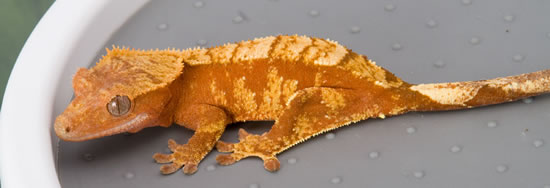
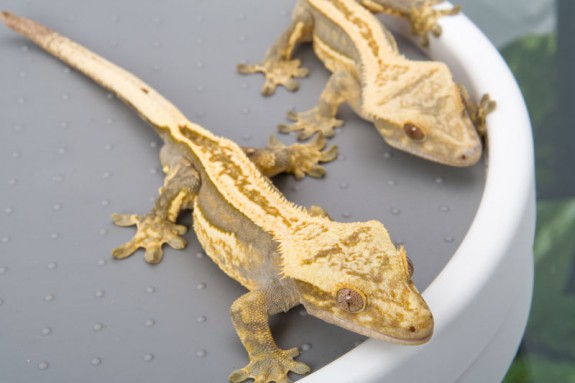
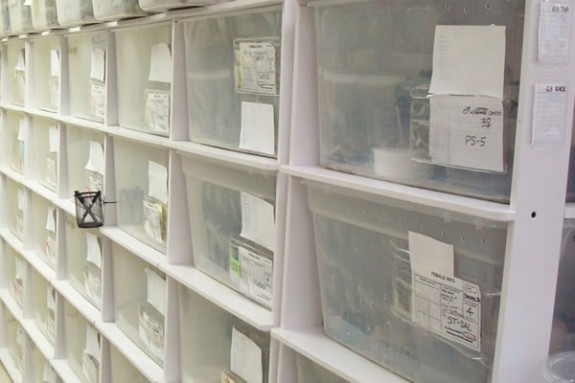
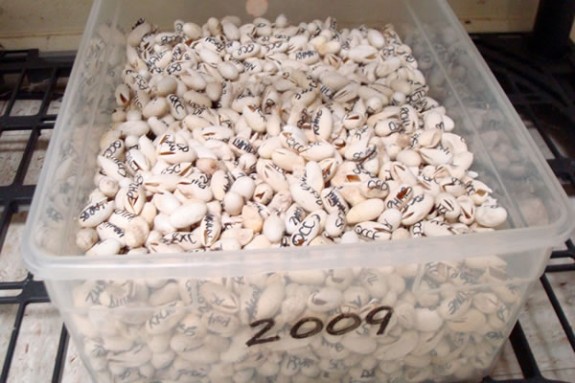
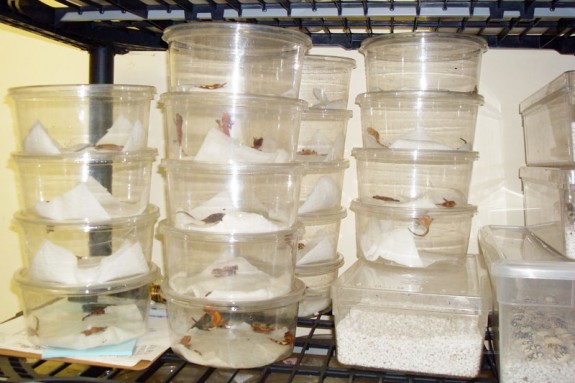
I’ve read somewhere that these species are rare and costly as they’re used for research purposes.
for what is worth i enjoyed this article
Hello, I just got 2 crested dumped on me about 2 months ago, i really didnt have the room for the the first time offered, so i let the chance go but my grandfather wasnt able to take care of them so he asked me to please take them, i took them with a very exception set up. now you gotta say right now that theres not a thing not to love about these creature… but they breed like crazy, and after reading your story i think i will try making some extra money on the side just breeding them slow and having maybe 5 females to the 1 male so that my 1 female doesnt get harmed from over producing.
I am curious why they were once considered extinct, this create can live just about throw anything
Sorry to just be going on and on but i really wanted to meet other crestie lovers like myself if you know of a nice community or something that would be awesome
well email me and id like to get to know you, really cool how you started this business
OMG! IM SORRY TO SOUND LIKE A DRAMA QEEN BUT CAN CRESTIES LAY EGGS WITH BREEDING?
I’m going to guess you really want to ask whether cresties can lay eggs **without** breeding. The answer is that some do, but the eggs are almost always infertile (there have been occasional accounts of other animals in the Rhacodactylus family producing fertile eggs without breeding).
Aliza
I love this article. For some reason, it was very inspiring and eye-opening. Instead of shooting down the idea of opening a facility or breeding on a large scale, he gives the best advice one can offer; have an amazing founding stock.
Right now, with my leopards, I’m breeding healthy, beautiful ‘mediocre’ specimens. Once I get my place in the market, and can move everything I produce (even with it being common morphs [ex. Super Hypos, Snows, etc.]) I will start upgrading and expanding my equipment and through down some big bucks on a few high-end projects. That way I can have the space to hold-back geckos to see what they truly have to offer.
Brian Johnson of BNB Exotics is a good example of this. He spent his money well on his first few breeders and held back everything he produced for 4 years; now he is breeding some really neat, quality animals because he got to see which geckos were most visually appealing at their breeding size instead of selling off his stock at 2-6months of age and missing out on the late bloomers.
This article should be read by newcomers wanting to know advice on how to become successful.